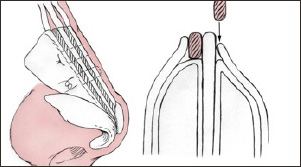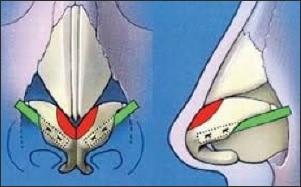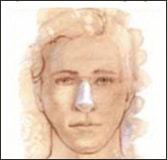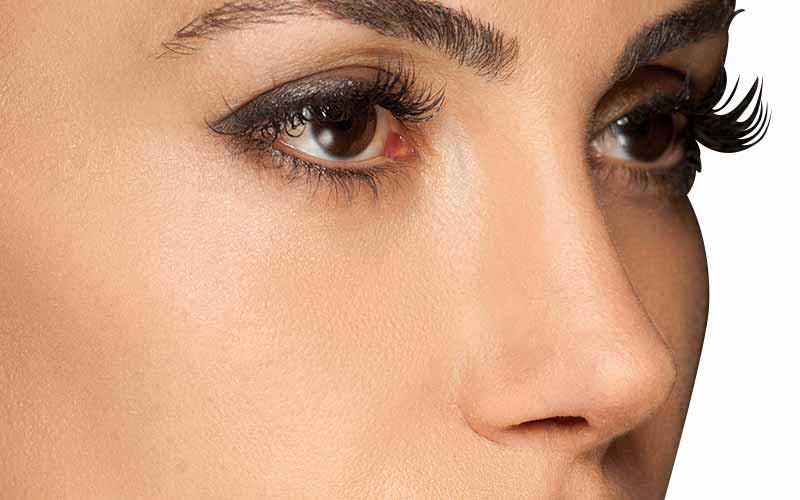Rhinoplasty revision
When evaluating any potential rhinoplasty revision patient at his Beverly Hills office, Dr. Haworth will review certain salient details of your previous procedure to determine what may have been done and what went wrong so that he can correct the underlying mistakes. Often times, the cornerstone of this rhinoplasty revision procedure usually requires strengthening weakened underlying cartilage and consequently the support it provides – being one of the top revision rhinoplasty specialists in Beverly Hills and Los Angeles, Dr. Haworth uses a variety of different techniques to achieve this goal.
Dr. Haworth has extensive experience with revision patients who can expect notable improvement but still must have realistic expectations as to the end result. You must remember, however, that surgery isn’t a means of achieving perfection.
TERMINOLOGY NOTES
Open vs. Closed Technique for Rhinoplasty Revision
Video
The majority of rhinoplasty revision procedures are performed using the open rhinoplasty technique because of the increased visualization and control it affords the rhinoplasty surgeon. However, there are certain few specific instances in which Dr. Haworth will use the closed technique, depending on the specific problem and whether it is minor or not. Dr. Haworth is an expert at strengthening the weakened underlying structure of the nose to not only to make the nose look great but to make it function as well (to maximize breathing ability). Dr. Randal Haworth says:
“The secret behind the best-looking noses are often strong triangularly sculpted cartilages that exert enough counter pressure on the overlying nasal skin in a delicate balance to impart elegant beauty. However, the integrity and strength of the nasal cartilages are often lost when a rhinoplasty was not performed correctly. A majority of the time those noses that look the best also function correctly for breathing purposes.”
Dr. Haworth is exceptionally gifted and experienced in creating and applying every form of cartilage grafts including columella struts, lateral crural strut, caudal septal extension, spreader, tip shield, alar battan, dorsal, and alar rim grafts. Indeed, some of the most complicated revision procedures require utilization of most if not all of those aforementioned grafts, including crushed cartilage to maximize smoothness of the final result.



Candidates for Rhinoplasty Revision
The most appropriate candidates for revision rhinoplasty are:
- At least 14 years old for young women, 16 for young men
- Those with unsatisfactory, unnatural-looking results from a previous rhinoplasty that can may include (but are not necessarily restricted to) a pinched tip, irregular profile, collapsed sidewalls (“Inverted V Deformity”), “Saddle Nose deformity”, crooked appearance, asymmetrical retracted nostril shape, etc.
- Those with unsatisfactory functional results in breathing or nasal airflow due to tissue damage or undesirable healing
- Those needing to get the results of a previous rhinoplasty improved while having realistic expectations of the results
- Those with nasal skin which is neither too thick nor too thin
Pre-Operative Consultation
Your successful rhinoplasty surgery will require a number of appointments to ensure maximum health and safety.
1. Pre-Op Consultation
The pre-operative consultation is where you meet with Dr. Haworth and our staff to review your health, finalize the details of your procedures, order appropriate tests, prescribe medications, discuss your aftercare and answer any questions you may have.
2. Medical Records
- Any appropriate health records related to the list of conditions noted above
- Any radiological test results including regular Xrays and CAT scans that may have
- For patients over 45, we may also require that you provide the following:
- Full medical clearance
- EKG
If you haven’t got these records or haven’t been tested lately, the rhinoplasty consultants in our office can coordinate these appointments for you.
3. Prescriptions
You will want to fill any and all prescriptions well in advance of your rhinoplasty surgery, particularly since some of them need to be taken for several days before the procedure.
4. Day of Surgery
Your rhinoplasty surgery will be performed at our surgical center in Beverly Hills. You will come in at the appointed time. Be sure to wear loose clothing that buttons or zips and does not need to be pulled over your head. Your ride will be instructed when to pick you up or can call in to find out when you’ll be ready. We cannot release you without a responsible adult to drive you home and spend the first post-op night with you.
If you are going to an aftercare facility, we can coordinate the transportation for you.
5. First Night Post-Op
Dr. Haworth is a rhinoplasty specialist that wants to make sure you feel safe and secure every step of the way. That evening after your surgery, he will call you to check in. You’ll want to make sure that you sleep with your head slightly elevated and only on your back, NOT on your side or face.
6. 1st Day Post-Op
Dr. Haworth will remove the small nasal pack at which time you will feel immediately better in terms of the slight pressure experienced immediately after surgery.
7. 7th Day Post-Op
Dr. Haworth and his assistants will remove the cast and stitches. 80% of his patients are impressed with their rhinoplasty results by the seventh to eighth day. However, the results will only improve time!
8. 10-14 Days Post-Op
Dr. Haworth may inject a dilute kenalog solution into the nasal tip to “turbocharge” the resolution of swelling. 95% of his patients already love their results by the end of the third week.
CRITICAL PRE-OP CAUTIONARY NOTE
It is absolutely essential that that you avoid all aspirin, aspirin-related, ibuprofen or blood-thinning medications for 2 full weeks prior to your surgery. In your pre-op consultation, we will give you a complete list of these drugs. For our patients, we also provide a password-protected link allowing you to download the list onto your computer. If in doubt about a specific medication, do not take it, call the office first and ask if it is on the forbidden list.
OPERATION AND RECOVERY LOGISTICS

Surgery duration: 1.5 – 4 hours. Revision rhinoplasty may take longer than anticipated due to the deformity encountered and the complexity of surgery needed to correct it.
Anesthesia: Sedated.
Sutures and cast removed: 5-7 days
As you wake up from surgery, you will feel mild pressure in your nose similar to what you feel when you have a cold but without the total body symptoms which normally accompany it. However, prescription painkillers will easily control the discomfort. You will most likely have a cast or tape over your nose to control bruising and swelling, while stabilizing the new shape of your nose in the immediate postoperative period.
By the end of the second week, you’ll look and feel much better. Most patients are back at work about one to two weeks after surgery. If you need it, special camouflage makeup can mask most bruising that remains.
Gradually, you will be able to resume to your normal activities:
- 1-3 days read or watch television
- 7 days resume wearing makeup (most bruising will be gone). However, you will most likely still be swollen.
- 7-14 days be out in public, back to work and take long strolls
- 2-3 weeks begin moderate and work up to vigorous exercise.
Minimizing Scars
Dr. Haworth Beverly Hills Skin Care Products As a top rhinoplasty surgeon, Dr. Haworth keeps up to date on optimal, scar-free healing. Scars resulting from a rhinoplasty are minor and generally hidden. Where there is a trace of a hairline scar across the columella, Scar Gard, Kelocote or similar silicone gel treatments can be somewhat effective in decreasing scar visibility faster. Or, if the patient wishes about six months after nasal surgery, Dr. Haworth can use resurfacing lasers to render an already light scar virtually undetectable.
POST-OPERATIVE CARE
You will need to keep your activities to a minimum for at least 7 days.
In person and in your post-op information packet, we shall explain everything you need to know for your aftercare at home that will include:
- Medications (prescription and homeopathic)
- Cleaning incision sites
- Utilizing a humidifier in your room while you sleep.
- Employing nasal saline rinses (Neil Med) to accelerate the healing process while minimizing complications.
Expect to tire easily for awhile. To aid your recovery you’ll want to rest as much as possible and:
- Avoid wearing eyeglasses and sunglasses for 6 to 8 weeks. The pressure and weight of the frames on your nose could distort your final results and interfere with your healing if you wear your glasses too soon after surgery. If you absolutely must wear prescription eyeglasses to function, tape them securely to your forehead with surgical tape.
- Treat your face and hair gently, since your skin will be both tender and numb
- Keep your head elevated above the level of your heart – even while sleeping – for about 2-3 weeks after surgery
- Avoid strenuous activity – including exercise, sex and heavy housework – for at least 2-3 weeks.
- Avoid steam baths, and saunas for at least 6 weeks or until the doctor gives you the OK
- Avoid alcohol and aspirin products for 2 weeks after surgery
- If you don’t feel dizzy, slow walking and mild stretching are fine as long as you keep your head above your knees
To optimize and accelerate healing, we also recommend coming into the office for hyperbaric oxygen treatments and Bioptron™ polarized light therapy. Both of these modalites can reduce swelling and bruising by up to 5-7 days. Addtionally, these exhibit signicant healing properties upon slow-healing incisions and injured skin.
RISKS AND CHALLENGES
Conditions that make nose surgery of a challenge and may require additional consent/consultation include:
- Thick, sebaceous or very thin skin
- Past nasal surgery
- Severely crooked nose
- Presence of a septal perforation
- Preexisting scars or a tendency to form excessive scars
- Active sinus infections
- Cocaine abuse
- Uncontrolled high blood pressure
- Blood clotting problems
- Smoking
No surgery is entirely risk-free. However, both our staff and facilities have the highest possible qualifications to produce a happy outcome.
While risks and complications are extremely rare, be aware that those for nose surgery can include:
- Missed aesthetic expectations
- Worsening of nasal breathing
- Persistent septal deviation
- Altered sense of smell (uncommon)
- Prolonged pain (very rare)
- Numbness or stiffness despite a great aesthetic outcome
- Infection (rare)
Additional treatment of either a surgical or non-surgical nature may be required to alleviate these problems and additional costs may apply.
FAQs
View frequently asked questions from patients considering Rhinosplasty & Revision Rhinoplasty facial procedures.
1. IS NOSE SURGERY PAINFUL?
No. It is uncomfortable at times because you will not be able to breathe through your nose for a couple of weeks after the surgery.
2. DO YOU NEED TO BREAK MY BONES DOCTOR?
Only if aesthetically advisable. Remember, “breaking the bones” doesn’t add any pain to the procedure postoperatively and only augments the result. “Breaking the bones” is, in fact, a very controlled maneuver using delicate instruments; indeed, “controlled infracture” is a more accurate term.
3. DO I NEED A CAST AND IF SO, FOR HOW LONG?
Most rhinoplasty patients will require casting for up to 1 week postoperatively to allow the bones to set. After 1 week the cast is removed.
4. WHEN CAN I GO BACK TO WORK AND SEE MY FRIENDS?
Most patients feel confident to see other people at 7-10 days after surgery. 80% of swelling takes 2-3 weeks to resolve while the remaining 10-20% takes 6 months to a year to go away. Bruising takes about 7-10 days to fade away. At 2 weeks postop, I administer a minute shot of cortisone that “turbo-charges” the disappearance of the swelling, so that most feel really great about their result at 3-4 weeks. It is only the very rare patient who experiences prolonged postoperative inflammatory swelling lasting many months.
5. MY NOSE FEELS HARD AND STIFF AND NUMB. IS THIS NORMAL?
Yes. These sensations last about 3 months and are par for the course.
6. WHEN CAN I PLAY SPORTS?
Your nose will be quite fragile for up to 8 weeks after surgery, so it is important to avoid all contact sports for this time. This also includes free bicycle riding (you can fall off), tennis water sports, etc. Murphy’s Law dictates that if something bad can happen, it will. Be forewarned.
7. MY NOSE IS STUFFY. WHEN WILL I NOTICE AN IMPROVEMENT IN BREATHING?
This depends on the individual, the extent of the surgery and how bad your breathing was in the first place. It will take several weeks to notice improvement in nasal inspiration, so before that time, you will be breathing mainly through your mouth. Consequently your mouth can get very dry especially while sleeping. Therefore, it is advisable to utilize a humidifier while sleeping to help alleviate the discomfort associated with a dry mouth. Nasal stuffiness after rhinoplasty results from normal postoperative swelling and obstructing crusts. Occasionally, I will prescribe a nasally inhaled steroid to help reduce the postoperative inflammation and associated blockage. Avoid vasoconstrictors such as Afrin™ after surgery since this may have a deleterious effect upon healing and long term breathing. Nasal saline sprays, such as Ayr™ and Ocean™ are very useful to clean out the nasal passages of crusts as well as the careful use of Q-Tips soaked in hydrogen peroxide. Honey dissolved in a small amount of warm water is quite effective in dissolving crusts, by either carefully sniffing the mixture through the nose or through applying it with Q-Tips. Honey also possesses some antibacterial activity.
8. IF I NEED A MINOR REVISION, WHEN CAN I GET IT DONE?
This is infrequent (under 4% with my patients), but if necessary, it is advisable to wait a minimum of 6 months after the original surgery. Very minor asymmetries can be corrected under local anesthesia (like the dentist) utilizing a permanent fat transfer technique, before 6 months.
9. WHY DO YOU PLASTIC SURGEONS RECOMMEND CHIN IMPLANTS AT THE SAME TIME AS RHINOPLASTIES?
We only do if the chin is small in relation to the other facial features. Both the nose and chin are the most prominent features when the face is viewed in profile. Consequently, they should be aesthetically balanced. However, the patient will be the ultimate judge of this.
10. HOW DIFFICULT ARE CHIN IMPLANTS? WHAT IS THE RECOVERY TIME?
Chin implant surgery is relatively easy surgery to perform for the surgeon and to recover from for the patient. Swelling is minimal and once the surgical tape is removed after a few days, patients feel comfortable going in public-even making television appearances! The implant will feel like your regular bony chin and should not move or shift. Infection is exceedingly rare. Liposuction under the chin and of the neck to highlight the jawline can be performed at the same time through the small small incision (about 1 cm long).



